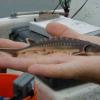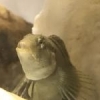This a 3d rendering of an aquarium designed to imitate tidal river systems, increase habitat enrichment, and possibly (in large sizes allow pelagic fish to be kept.
The white part is the bottom of the tsank not the water level.
This tank would allow a relatively small series of pumps to create a large current flow over time. The current would be reversed every six hours like a tidal switch. Each time the current is reversed there would a time of turbulence as in the wild. This tank would allow fish to roam and or pick their own habitat. Fish can swim in one direction continuously without doing a 180 turn and has large round sections for the fish to explore. Here are the pictures, questions and critique is welcome.
 23559740_10211381585709356_8800998899498266811_n.jpg 123.4KB
1 downloads
23559740_10211381585709356_8800998899498266811_n.jpg 123.4KB
1 downloads
 image (1).jpg 18.12KB
1 downloads
image (1).jpg 18.12KB
1 downloads
 image.jpg 17.61KB
1 downloads
image.jpg 17.61KB
1 downloads
 image (2).jpg 19.19KB
1 downloads
image (2).jpg 19.19KB
1 downloads









